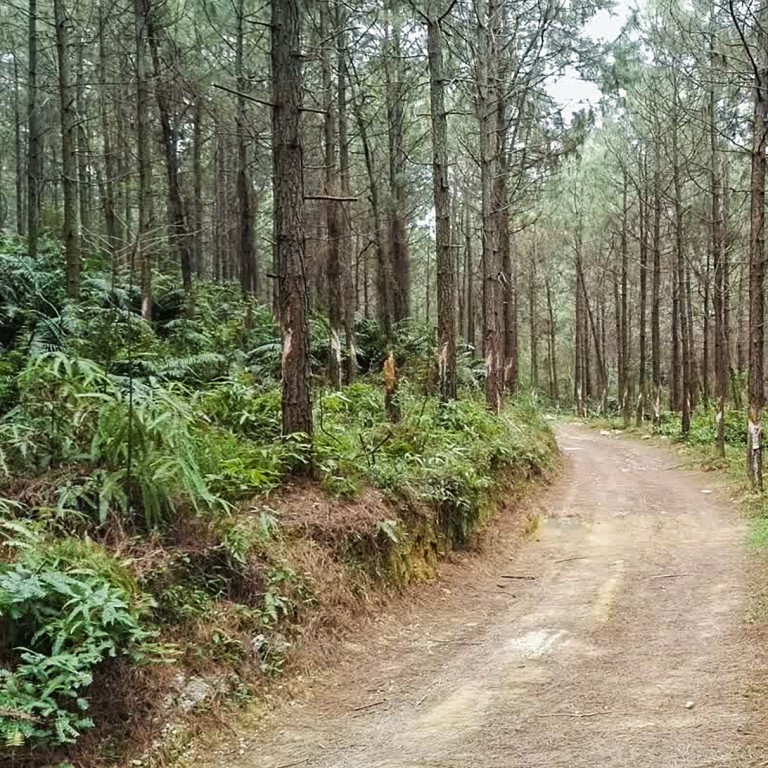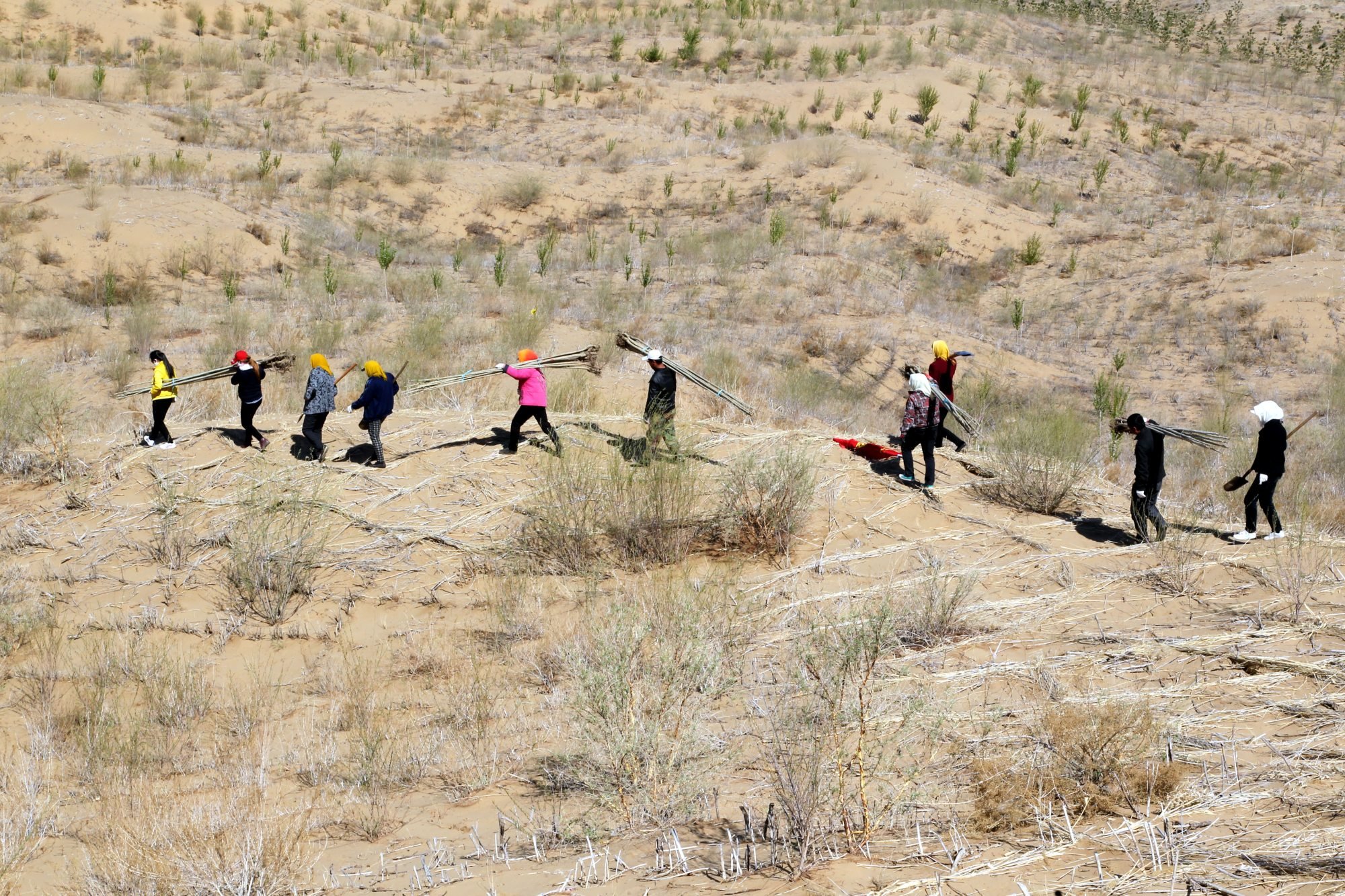
Climate Change: China’s tree breeders are coming up with a business model to make money while doing right by the environment
- At Fenglin in Jiangxi province, 70 per cent of revenue comes from selling various products harvested from pine trees
- The remainder of the income comes from carbon credits, Fenglin’s general manager says
Late last year, Chinese scientists published an article in the internationally renowned journal Cell, uncovering the genetic code and the molecular mechanisms regulating the evolution of Pinus tabulaeformis, a coniferous tree native to China.
The study, led by Beijing Forestry University’s researchers, was hailed as a scientific breakthrough in the cultivation of pine trees by thousands of breeders, including Wang Lianmau of Jiangxi Fenglin Investment.
“With this breakthrough, trees can grow faster and stronger, and be less susceptible to pests and diseases,” said Wang, general manager of the company with 350,000 mu (23,000 hectares) of plantation in southeastern China’s Jiangxi province. “The selection and breeding of new fast-growing varieties with high yield, high timber quality and strong [disease] resistance is an effective means of improving productivity and expanding forest resources.”
Fenglin is talking with the researchers to uncover the genetic codes for two species of trees on its plantation, mainly Pinus elliottii and Pinus kesiya, he said, using 21st century technology to augment the development of forestry as carbon sinks.
China has a carbon storage tool from decades of tree-planting frenzy
The ability of plantations to reduce carbon dioxide can earn them credits that are tradeable via unregulated carbon markets once their sustainability and management standards are verified.

The challenge is to turn the concept into a thriving business model, according to professional investors.
“One unresolved problem is the lack of standardised frameworks to let sustainable forest management companies monetise the environmental benefits their assets generate,” said Gillian Diesen, a manager of thematic equities at Pictet Asset Management.
A viable business model should combine afforestation with the sale of timber, including its by-products and carbon credits, said Chan Tak-yuen, an adviser to CFGC Amital Green Fund, co-invested by Hong Kong’s Euto Capital partners and state-owned China Forestry Group Corporation (CFGC).
The fund, which aims to raise US$100 million initially, backs companies that invest in sustainable and high-yielding afforestation, carbon storage projects and the development of required technology.

Fenglin is already harvesting various income streams from its forests, Wang said, pointing out that over 70 per cent of revenue comes from selling turpentine, resins, rosins used in mail and express delivery packages – all harvested from his plantation. Pine trees can be sold as timber when they reach their optimum felling age at 25 years.
“The rest is income from carbon credits,” he said, pointing out that more than 60 per cent of the plantation’s area has qualified as carbon storage, the first such large commercial development since 2016.
Outside China, the business of using afforestation to mitigate climate change has matured enough to attract big bets by professional investors, partly as hedges for the risk of rising costs of carbon-offsetting in other investments.
Playing god: in ‘greening’ the desert, is China doing more harm than good?
JP Morgan Asset Management paid an undisclosed sum to buy the forest investment and management firm Campbell Global, with US$5.3 billion in assets and 680,000 hectares worldwide under management.
“We can’t deem [carbon credits] as an asset class, but it is increasingly becoming an important aspect when you think about the overall portfolio’s exposure to carbon emission intensity,” said Tomomi Shimada, the bank’s lead sustainable investing strategist for the Asia-Pacific.

Sydney-based forestry private equity investment firm New Forests, which manages 1.1 million hectares valued at US$5.8 billion, aims to raise US$300 million for a Southeast Asia-focused forest fund this year. It has already received investors’ commitments for US$120 million.
It seeks funds from both private foundations that want to invest in projects to create social and environmental benefits besides generating profits, and returns-focused pension funds and sovereign wealth funds.
“This blended structure allows us to generate positive impacts while still keeping the return intact to bring the commercial investors into this space,” said New Forests’ Asia managing director Geoffrey Seeto.

By selling timber and carbon credits, it aims to provide private foundations a “mid-to-high single digit” percentage annual return over a decade. An average return of 14 to 18 per cent is expected for investors looking for commercial returns.
Forestry is gaining popularity as a tool for companies to offset their carbon footprints, because renewable energy projects increasingly do not qualify for carbon credits, Sustainable Fitch said in an April 11 research report.
Some 115 million tonnes of forestry-related carbon credits were transacted globally in the first eight months of 2021, more than the 48 million tonnes traded in the whole of 2020, according to data provided by Ecosystem Marketplace.
“Forest carbon projects can be profitable, but the return period is long due to the breeding cycle,” Wang said. “We are also eyeing projects in nations covered by China’s Belt and Road Initiative where land and labour costs are lower.”
Additional reporting by Martin Choi and Yujie Xue


